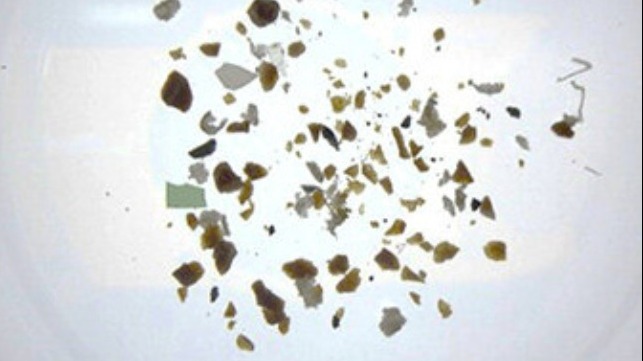MOL Reports Collected Microplastics Can Become Energy Source

While much of the environmental focus remains on emissions, researchers continue to also work on the equally pressing problem of microplastics in the world’s oceans. A Japanese project, working with Mitsui O.S.K. Lines is reporting progress in their efforts with the successful production of a potential source of energy drawn from microplastics and microalgae collected by the Japanese shipping line’s vessels.
The team at Eco Trinity, which is working on purifying water and converting waste into resources as part of Project Sea Unicorn (IKKAKU) which focuses on reducing ocean debris announced the successful production of carbon products from the microplastics and microalgae. In announcing the project, MOL compared the results to wood pellets saying that the plastics had the potential to become an alternate source of energy. The carbon products, recovered from collected microplastics, become a raw material for the fuel pellets.
“The success of this demonstration shows the potential use of microplastics as an energy resource,” said MOL speaking on behalf of the researchers. They believe this success “could encourage the collection of microplastics from the ocean to increase production of carbon materials and in turn expand the energy supply.”
Researchers at Seas At Risk, an association of environmental organizations from across Europe, said last spring that they believed that the majority of microplastics in the ocean come from sources such as tire dust, synthetic textile fibers, city dust, and marine paints. Additional microplastics resulting from the degradation of larger plastic items at sea come from most economic sectors they reported, including agriculture, construction, tourism, aquaculture, fisheries, and shipping.
Seas At Risk cites data that shows global plastic production has been increasing exponentially since the 1950s. It stood at over 200 million tons produced in 2000 increasing to 368 million tons in 2019. They cite a forecast that production will exceed 500 million tons by 2025 and 650 million by 2030.
An analysis suggested at as much as four to eight million tons of plastic might be entered the oceans each year. Some forecasts suggest there are as much as 14 million tons of plastics already on the ocean floor.
A year ago, MOL announced that it was beginning testing a new filter that would be placed on an in service dry bulk wood chip carrier that would collect plastics in the ballast water treatment system. They later reported that they were encouraged by the results of the collection program and planned to install the device on a newbuild wood chip carrier scheduled to enter service in 2022 as well as additional in service vessels.
The shipping line says that the latest results provide a new impetuous for the collection suggested a possible use to offset the efforts required for the collection.
